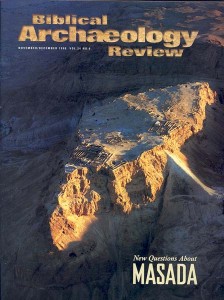
This silver appliqué of a lion attacking a stag, one of a perfectly preserved pair, dates to fourth-century B.C. Thrace and is thought to have decorated a harness. The horns and the spots of the stag and the mane of the lion are gilded. Appliqués—metal objects attached to clothing, armor and leather—were mainly used for decoration, but Thracian warriors believed some appliquéd images provided divine protection.
Recent excavations have shed considerable light on ancient Thrace, a region spanning modern Bulgaria, northern Greece, western Turkey and most of Romania. This appliqué was discovered at Lukovit, Bulgaria. The Thracians never developed a written language, so what we know comes from the gold and silver luxury items the Thracians left behind and from foreign literary sources, such as Homer’s Iliad. These sources indicate that the Thracians were known throughout the ancient world as fierce fighters and splendid horsemen; in the fifth century B.C., for example, Herodotus warned that were the Thracians to unify under a single ruler, they would “be far the mightiest of all people on earth.”
Already a library member? Log in here.
Institution user? Log in with your IP address.

